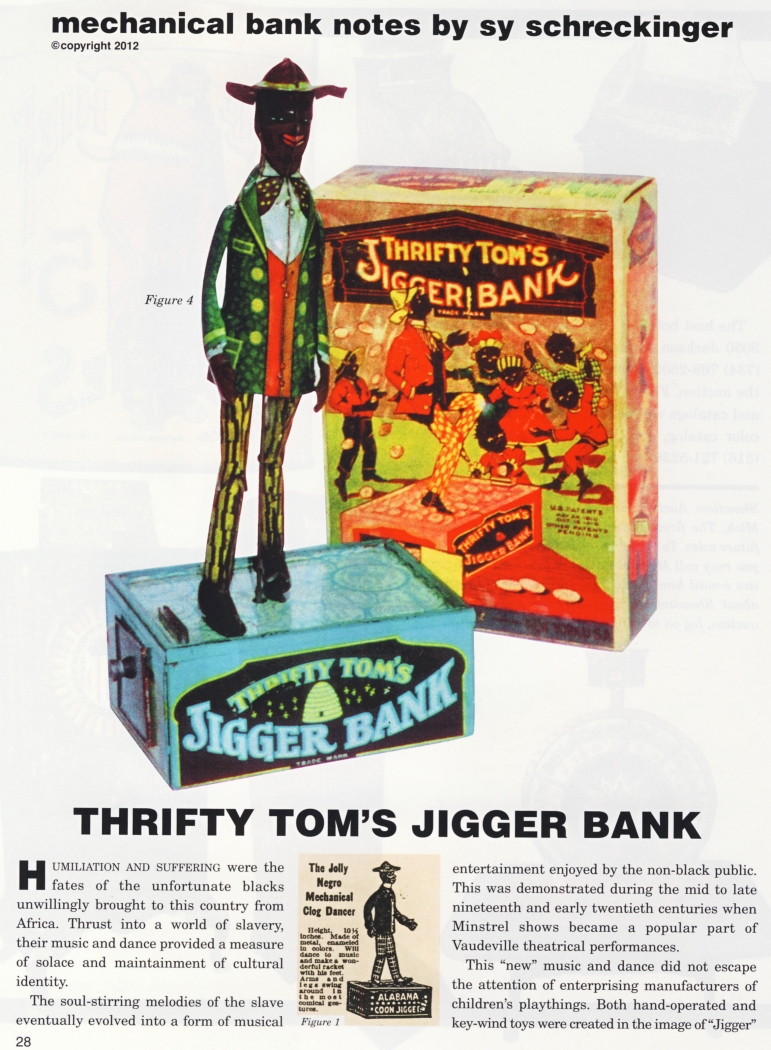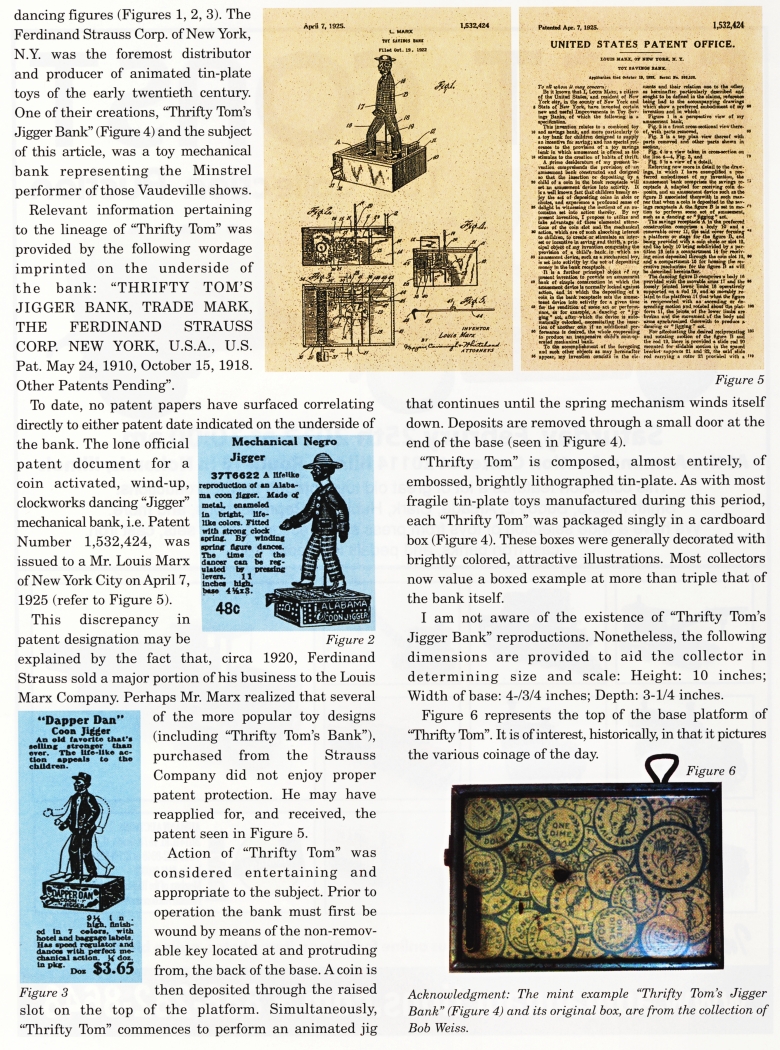|
Thrifty Tom's Jigger Bank
by Sy Schreckinger – ANTIQUE TOY WORLD Magazine – February, 2012
HUMILIATION AND SUFFERING were the fates of the unfortunate blacks
unwillingly brought to this country from Africa. Thrust into a world of
slavery. their music and dance provided a measure of solace and
maintainment of cultural identity.
The soul-stirring melodies of the slave eventually evolved into a form
of musical
entertainment enjoyed by the non-black public. This was demonstrated
during the mid to late nineteenth and early twentieth centuries when
Minstrel shows became a popular part of Vaudeville theatrical
performances.
This "new" music and dance did not escape the attention of enterprising
manufacturers of children's playthings. Both hand-operated and key-wind
toys were created in the image of "Jigger"
dancing figures (Figures 1, 2, 3). The Ferdinand Strauss Corp. of New
York, N.Y. was the foremost distributor and producer of animated
tin-plate toys of the early twentieth century. One of their creations,
"Thrifty Tom's Jigger Bank" (Figure 4) and the subject of this article,
was a toy mechanical bank representing the Minstrel performer of those
Vaudeville shows.
Relevant information pertaining to the lineage of "Thrifty Torn" was
provided by the folowing wordage imprinted on the underside of the
bank: "THRIFTY TOM'S JIGGER BANK, TRADE MARK, THE FERDINAND STRAUSS
CORP. NEW YORK, U.S.A., U.S. Pat. May 24, 1910, October 15, 1918. Other
Patents Pending".
To date, no patent papers have surfaced
correlating directly to either patent date indicated on the underside of
the bank. The lone official patent document for a coin activated,
wind-up, clockworks dancing "Jigger" mechanical bank, i.e. Patent Number
1,532,424, was issued to a Mr. Louis Mark
of New York City on April 7,
1925 (refer to Figure 5).
This discrepancy in
patent designation may be
explained by the fact that, circa 1920, Ferdinand
Strauss sold a major portion of his business to the Louis Marx Company.
Perhaps Mr. Marx realized that several of the more popular toy designs
(including "Thrifty Tom's Bank"), purchased from the Strauss Company did
not enjoy proper patent protection. He may have reapplied for, and
received, the patent seen in Figure 5.
Action of "Thrifty Tom" was considered entertaining and appropriate to
the subject. Prior to operation the bank must first be wound by means of
the non-removable key located at and protruding from, the back of the
base. A coin is Figure 3 then deposited through the raised slot on the
top of the platform. Simultaneously, "Thrifty Tom" commences to perform
an animated jig
that continues until the spring mechanism winds itself down. Deposits
are removed through a small door at the end of the base (seen in Figure
4).
"Thrifty Tom" is composed, almost entirely, of embossed, brightly
lithographed tin-plate. As with most fragile tin-plate toys manufactured
during this period, each "Thrifty Tom" was packaged singly in a
cardboard box (Figure 4). These boxes were generally decorated with
brightly colored, attractive illustrations. Most collectors now value a
boxed example at more than triple that of the bank itself.
I am not aware of the existence of "Thrifty Tom's Jigger Bank"
reproductions. Nonetheless, the following dimensions are provided to aid
the collector in determining size and scale: Height: 10 inches; Width of
base: 443/4 inches; Depth: 3-1/4 inches.
Figure 6 represents the top of the base platform of "Thrifty Tom". It is
of interest, historically, in that it pictures the various coinage of
the day.
Acknowledgment: 7'he mint example. "Thrifty Tom's Jigger Bank" (Figure
41 and its original box, are from the collection of Bob Weiss.
|


